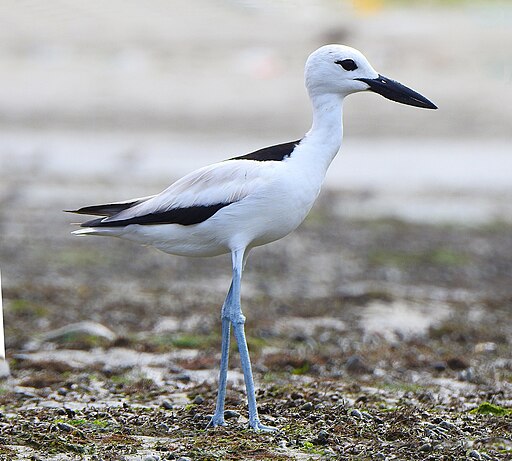Superregnum: Eukaryota
Regnum: Animalia
Subregnum: Eumetazoa
Cladus: Bilateria
Cladus: Nephrozoa
Superphylum: Deuterostomia
Phylum: Chordata
Subphylum: Vertebrata
Infraphylum: Gnathostomata
Megaclassis: Osteichthyes
Cladus: Sarcopterygii
Cladus: Rhipidistia
Cladus: Tetrapodomorpha
Cladus: Eotetrapodiformes
Cladus: Elpistostegalia
Superclassis: Tetrapoda
Cladus: Reptiliomorpha
Cladus: Amniota
Classis: Reptilia
Cladus: Eureptilia
Cladus: Romeriida
Subclassis: Diapsida
Cladus: Sauria
Infraclassis: Archosauromorpha
Cladus: Crurotarsi
Divisio: Archosauria
Cladus: Avemetatarsalia
Cladus: Ornithodira
Subtaxon: Dinosauromorpha
Cladus: Dinosauriformes
Cladus: Dracohors
Cladus: Dinosauria
Ordo: Saurischia
Cladus: Eusaurischia
Cladus: Theropoda
Cladus: Neotheropoda
Cladus: Averostra
Cladus: Tetanurae
Cladus: Avetheropoda
Cladus: Coelurosauria
Cladus: Tyrannoraptora
Cladus: Maniraptoromorpha
Cladus: Maniraptoriformes
Cladus: Maniraptora
Cladus: Pennaraptora
Cladus: Paraves
Cladus: Eumaniraptora
Cladus: Avialae
Infraclassis: Aves
Cladus: Euavialae
Cladus: Avebrevicauda
Cladus: Pygostylia
Cladus: Ornithothoraces
Cladus: Euornithes
Cladus: Ornithuromorpha
Cladus: Ornithurae
Cladus: Carinatae
Parvclassis: Neornithes
Cohors: Neognathae
Cladus: Neoaves
Ordo: Charadriiformes
Subordo: Charadrii
Familia: Dromadidae
Genus: Dromas
Species: Dromas ardeola
Name
Dromas ardeola Paykull, 1805
References
Kongl. Vetenskaps Akademiens Nya Handlingar 26: 182, 188, t.VIII.
Vernacular names
čeština: Pobřežník černobílý
English: Crab-plover
Esperanto: Krabpluvio
español: Dromas
français: Drome ardéole
hrvatski: Dromah
日本語: カニチドリ
svenska: Hägerpipare
The crab-plover or crab plover (Dromas ardeola) is a bird related to the waders, but sufficiently distinctive to merit its own family Dromadidae. Its relationship within the Charadriiformes is unclear, some have considered it to be closely related to the thick-knees, or the pratincoles, while others have considered it closer to the auks and gulls. It is the only member of the genus Dromas and is unique among waders in making use of ground warmth to aid incubation of the eggs.
Description
The feet are partially webbed
This bird resembles a plover, but has very long grey legs and a strong heavy black bill similar to a tern. Its black-and-white plumage and long-necked upright posture with heavy bill makes it distinctive and unmistakable. Its bill is unique among waders, and specialised for eating crabs. It has partially webbed toes. The plumage is white except for black on its back and in the primary feathers of the wings. They are noisy birds, calling frequently on their breeding sites and in their wintering grounds. The usual call is a ka similar to that of the bar-tailed godwit but repeated rapidly. Flocks may produce a whinnying sound that rises and at in the breeding season produce whistling kew-ki-ki notes.[2]
Males and females are not easily distinguished but males have a heavier and longer bill. Juveniles have the black on the mantle, greyish and remain in this plumage for a year. Flocks fly in lines or "V" formations.[2]
The crab-plover is one of the species to which the Agreement on the Conservation of African-Eurasian Migratory Waterbirds (AEWA) applies.
Range
It is resident on the coasts and islands of the Indian Ocean, where it feeds on crabs and other small animals. They are gregarious and will feed in large groups, at night and during dawn and dusk as well as during the day; this crepuscular and nocturnal behaviour is more common during the breeding season. They breed around the Arabian Sea, Gulf of Oman and the Persian Gulf, Red Sea and Somalia in the months of April to July then disperse across the Indian Ocean in August as far as the Andaman Islands and Sri Lanka in the east and Tanzania and Madagascar.[2]
Habits
Crab-plover eating a crab
The crab-plover is unusual for waders in that it nests in burrows in sandy banks. In the Red Sea region, the breeding season begins around the middle of May.[3] It is a colonial breeder, nesting in colonies as large 1500 pairs. It lays one white egg, occasionally two, which are large for its body size. The nest burrow temperature is optimal due to solar radiation and the parents are able to leave the nest unattended for as long as 58 hours.[4] The chicks are also unique for the usually nidifugous waders in being unable to walk and remain in the nest for several days after hatching, having food brought to them. Even once they fledge they have a long period of parental care afterwards. Both males and females take care of the young.[5]
Notes
BirdLife International (2019). "Dromas ardeola". IUCN Red List of Threatened Species. 2019: e.T22694081A155499202. doi:10.2305/IUCN.UK.2019-3.RLTS.T22694081A155499202.en. Retrieved 12 November 2021.
Hayman, P.; J. Marchant; T. Prater (1986). Shorebirds: an identification guide to the waders of the world. Croom Helm, London. pp. 222–223.
Baker, ECS (1929). "The game birds of the Indian empire. Part 8. The waders and other Semi-sporting birds". J. Bombay Nat. Hist. Soc. 33 (2): 223–228.
De Marchi, G.; Chiozzi, G.; Fasola, M. (2008). "Solar incubation cuts down parental care in a burrow nesting tropical shorebird, the crab plover Dromas ardeola". Journal of Avian Biology. 39 (5): 484–486. doi:10.1111/j.0908-8857.2008.04523.x.
Szekely, Tamas; John D. Reynolds (1995). "Evolutionary Transitions in Parental Care in Shorebirds". Proc. R. Soc. B. 262 (1363): 57–64. doi:10.1098/rspb.1995.0176.
References
Handbook of the Birds of the World, Volume Three, Hoatzin to Auks; de Hoyo, Elliot and Sargatal, ISBN 84-87334-20-2
Retrieved from "http://en.wikipedia.org/"
All text is available under the terms of the GNU Free Documentation License


